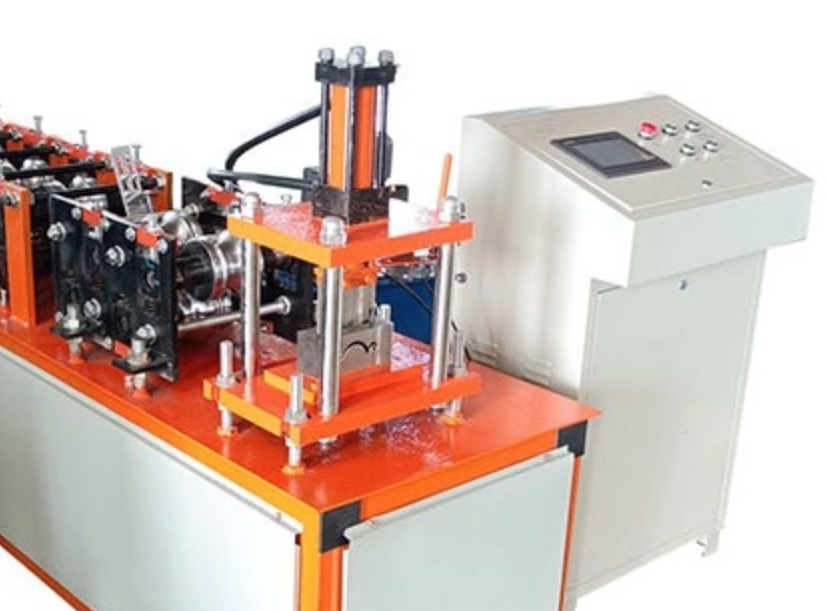
Posted on Monday, September 22, 2025
Roll forming machines are the backbone of modern metal fabrication, producing roofing panels, structural profiles, and other precision-formed metal products efficiently and consistently. At the heart of these machines lies the PLC (Programmable Logic Controller), a critical component that controls every movement—from rollers and cutters to sensors and alarms. Choosing the right PLC, understanding how to connect it, making program adjustments safely, and following best practices can mean the difference between smooth production and costly downtime. This guide provides a comprehensive overview for operators, engineers, and manufacturers who rely on roll forming technology.
A PLC is an industrial computer that manages automation tasks. In a roll forming machine, it controls:
Roller sequences – ensuring the correct shaping of metal sheets.
Cutting and punching systems – triggering precise cuts at the correct intervals.
Sensors and feedback loops – monitoring position, thickness, speed, and safety devices.
Alarms and error handling – stopping the machine safely when faults occur.
PLCs replace traditional relay logic systems, providing flexibility, ease of programming, and the ability to adapt to different products without rewiring the machine.
The choice of PLC depends on factors like the complexity of the machine, the number of inputs and outputs, communication requirements, budget, and the level of technical support required. Here are the most commonly used PLCs in roll forming applications:
Models: S7-1200, S7-1500
Advantages: Extensive I/O options, high reliability, integrated safety features, robust networking capabilities.
Ideal for: Large-scale or high-end roll forming lines requiring advanced control and diagnostics.
Models: CompactLogix, ControlLogix
Advantages: Strong HMI integration, user-friendly programming environment, widely supported in North America.
Ideal for: Manufacturers who prioritize ease of use and seamless integration with other Rockwell systems.
Advantages: Compact, cost-effective, reliable for small to medium machines.
Ideal for: Budget-conscious operators with simpler control requirements.
Advantages: High-speed processing, modular design, advanced motion control capabilities.
Ideal for: Applications needing precise control and fast response times.
Advantages: Affordable, reliable, suitable for standard automation tasks.
Ideal for: Manufacturers seeking an economical yet dependable solution.
Factors to consider: machine size, production speed, product complexity, software compatibility, and available technical support.
Correctly connecting to a PLC is crucial for programming and maintenance. Here’s a safe step-by-step approach:
Identify the PLC brand and model on the machine.
Gather necessary tools: programming cable, laptop with compatible software, and safety equipment.
Power down the machine before connecting to prevent accidental start-up.
Connect the programming cable directly to the PLC port (USB, Ethernet, or serial).
Launch the programming software and select the correct communication port.
Verify connection by reading the PLC’s current program and status.
Safety tip: Never work on live electrical connections unless absolutely necessary and properly trained.
Making changes to a PLC program allows you to adjust machine behavior to meet production needs. Follow these best practices:
Always download and save the current PLC program before making changes.
Maintain multiple copies in secure locations.
Most PLCs use ladder logic, function blocks, or structured text.
Make small, incremental changes and test each modification.
Use simulation mode in the software if available.
Test with the machine idle or at low speed.
Verify sensors, outputs, and safety interlocks before full production.
Roller speed changes to match different materials.
Cut length adjustments for panels or profiles.
Sensor calibration to ensure accurate position detection.
Following best practices ensures reliability and longevity:
Document all wiring and program changes – both physically on the machine and in the software.
Maintain regular backups and version control.
Train operators to understand basic PLC functions, such as starting, stopping, and clearing alarms.
Maintain hardware – ensure the PLC is mounted securely, free from vibration, moisture, and dust.
Inspect cables and connectors regularly for wear or damage.
Even with proper care, issues may arise:
Wrong motor rotation: often caused by phase rotation issues in three-phase power or incorrect wiring.
Sensor failures: misaligned, dirty, or damaged sensors can cause errors.
Communication errors: ensure proper cabling, ports, and software versions.
If a problem involves complex motion control, servo tuning, or major software changes, it’s safest to contact a trained automation engineer. Attempting advanced troubleshooting without experience can damage equipment or create safety hazards.
A well-selected and properly managed PLC system is the backbone of any efficient roll forming operation. By understanding the types of PLCs available, learning how to safely connect and program them, following maintenance best practices, and knowing when to call an expert, manufacturers can ensure smooth, safe, and productive operations.
Investing time in training, documentation, and backups not only reduces downtime but also protects both the machinery and the personnel operating it. With the right PLC system and management approach, your roll forming line can run reliably for years to come.

32/1000 Box Profile Roll Forming Machine – Complete Guide & Specifications
Posted on Sunday, November 16, 2025
High-performance 32/1000 box profile roll forming machine for roofing and cladding. Full specifications, profiles, applications, pricing

PBR / R-Panel Roll Forming Machine – Complete Guide & Specifications
Posted on Sunday, November 16, 2025
PBR / R-Panel roll forming machine for roofing and wall cladding. Full specs, profiles, applications, pricing, and global buying guide. Built to order.

Posted on Sunday, November 16, 2025
How to Diagnose and Fix the Hidden Electrical Problems That Cause Downtime
Copyright 2025 © Machine Matcher.